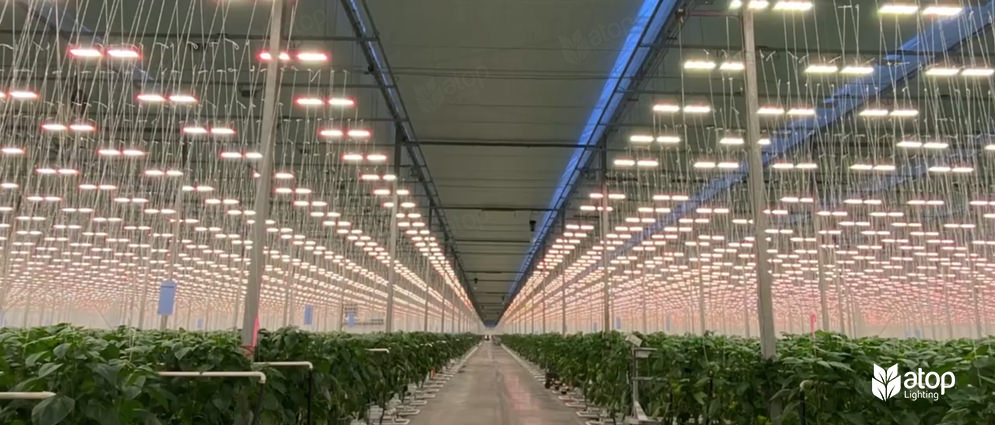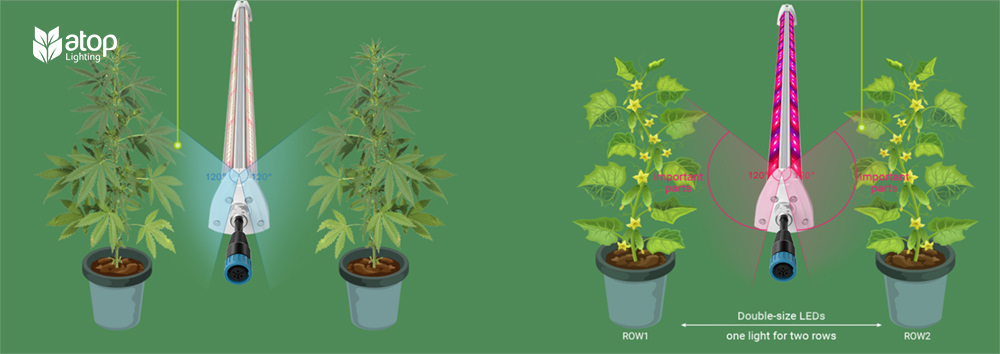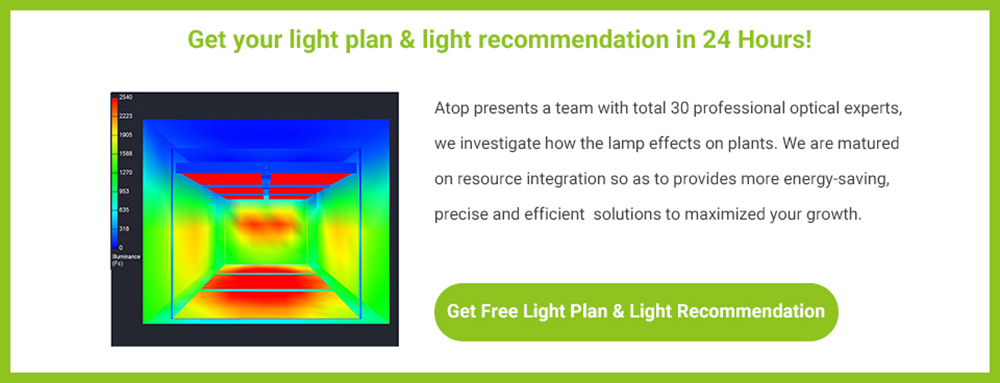How to Achieve Uniform Light for Consistent Crop Growth
When growers are selecting grow lights for their greenhouses or indoor farms, they may take the quality, light spectrum, water resistance, and efficiency into consideration. However, not all grow lights are equal in terms of quality, quantity, and efficiency. It is essential to provide uniform light across the plant canopy. Uniform light is crucial for consistent crop growth in both greenhouse and indoor farming cultivation. It enables plants to receive an equal amount of light, which promoted health growth and higher yields. However, achieving uniform light can be a challenge. In this post, we will discuss the importance of uniform light, factors affect light uniformity, and effective ways to achieve high light uniformity.
What is light uniformity
For horticulture lighting, light uniformity means how well light is distributed across the growing area. A higher light uniformity means that there is less variation in the brightness of the light across the growing area. A lower light uniformity means that there are areas of overexposure or underexposure that can affect crop growth. Light uniformity is measured measured at a specific distance from the light source to the plant canopy. To calculate light uniformity, you need to measure the illuminance points in the area using a lux meter or a photometer. Then you can use the formulas below to find the ratios.
- U1 = Minimum illuminance / Average illuminance
- U2 = Minimum illuminance / Maximum illuminance
- U3 = Average illuminance / Maximum illuminance

Why uniform lighting is important
Uniform lighting is important for consistent crop growth. It helps to produce more even, stable, and high-quality crops. Light uniformity is an essential consideration when deciding the orientation of new greenhouses, greenhouse shading systems, and plant lighting systems for photoperiodic lighting, supplemental lighting, and sole light source applications. Generally, a growing space right under the grow light has higher light intensity than other places, creating a “hot spot”. If the light is uneven distributed, plants right under the grow lights will grow faster and taller than others because they absorb more light. Moreover, taller plants will cast shadows on the smaller plants. This results uneven plant growth. Plants that receive insufficient light will grow slowly or even struggle to thrive. Besides, faster-growing plants risk being burned when they get too close to grow lights.
Factors that effect light uniformity
There are many factors that affect light uniformity in horticulture lighting. The main factors include the type of grow lights, light intensity, quantity of grow lights, position of grow lights, reflection and absorption.
- Types of grow lights: Different light sources have different characteristics, such as brightness, color, spectrum, beam angle, and distribution. For example, LED lights are more energy-efficient, durable, and controllable than HPS lights. Choosing the right light source for your plants can improve plant growth and development.
- Light intensity: The intensity of the artificial lights can also affect uniformity. If the intensity is too high, it can create hot spots and areas of overexposure, leading to uneven lighting and crop growth.
- Quantity of grow lights: The number of grow lights determines how much light is available for the area. Neither too many or too few grow lights can result uneven light distribution. Finding the optimal number of light sources can balance light quantity and uniformity.
- Position of grow lights: The position of grow lights affects how they illuminate the area and interact with each other. Placing grow lights too close to each other can cause overlapping and hot spots. Placing grow lights too far from each other can cause gaps and shadows. Adjusting the position of grow lights can optimize light coverage and uniformity.
- Reflection and absorption: The surface properties of surrounding objects can affect the uniformity of light. Surfaces that absorb light will not reflect it, leading to dark areas, while reflective surfaces can cause overexposure. This is the reason why greenhouse glazing material and shade curtains affect light intensity and uniformity.
How to achieve high light uniformity
Generally speaking, it is impossible to achieve 100% evenly distributed horticulture lighting because there are many factors that affect light uniformity. But it is possible to achieve a high level of light uniformity by using appropriate techniques and lighting systems that optimize light coverage and quality for crop growth.
Use high quality LED grow lights
To reach high light uniformity and maintain it, you need to use high quality LED grow lights. Why? Because high quality LED grow lights usually have accurate spectrum, high resistance to harsh environments, reliable structures, robust designs, and low maintenance. They have long lifespan, stable light output and light spectrum, which ensures light uniformity throughout the plant growth.
Take our Horti-Top LED grow Light as examples. Horti-Top is designed with plastic lenses. This contributes to resistance to yellowing and high temperatures, and ensures that grow lights will emit stable light spectrum consistently. It also uses the lens of 110° * 140° optical, providing wide and even light distribution.
Watch the video to see how Horti-Top can help with consistent crop growth.
Consider glazing and shade materials
Grow lights are used as supplemental lighting for greenhouse. The light uniformity will also affected light the orientation of greenhouses and natural sunlight. When light intensity varies greatly throughout the greenhouse, plants in shaded areas may grow slower than those in sunlit areas, resulting in uneven growth and reduced yield. The choice of glazing and shade materials influences the light uniformity inside the greenhouse.The use of diffused glass as greenhouse glazing material and plastics in shade curtains can diffuse sunlight, and thereby increase light uniformity.
Utilize inter-lighting system
For high-density crops like tomatoes, cucumbers, and cannabis, their lower layers of foliage overlap, shading each other. So no matter how much light you supplement at the top, there is still not enough light at the bottom. The shortage of light at the lower layer will lead to reduced fruit production, poor appearance, and poor taste. That is where the inter-lighting system makes sense. Inter-lighting is available for installing in-between vine crops and is allowed to be close to plants. The adoption of inter-lighting can increase light uniformity effectively. In turn, growers are able to achieve better fruit quality and higher yields.

Ask for a light plan
Because light uniformity can be affected by various factors, the simplest way for commercial growers to achieve a uniform light environment is to ask horticulture lighting companies or manufacturers to create a light plan. This light plan specific to your operation and application to provide an optimal growing environment. As an expert in LED horticulture lighting, we provide not only free but also professional light plans for our customers. We use Agi32 and Dialux as planning tools to provide precise and reliable simulation results. With 30 lighting experts and years of experience in greenhouse and indoor farming projects, we can maximize lighting uniformity and efficiency while using the minimum number of lighting fixtures.


